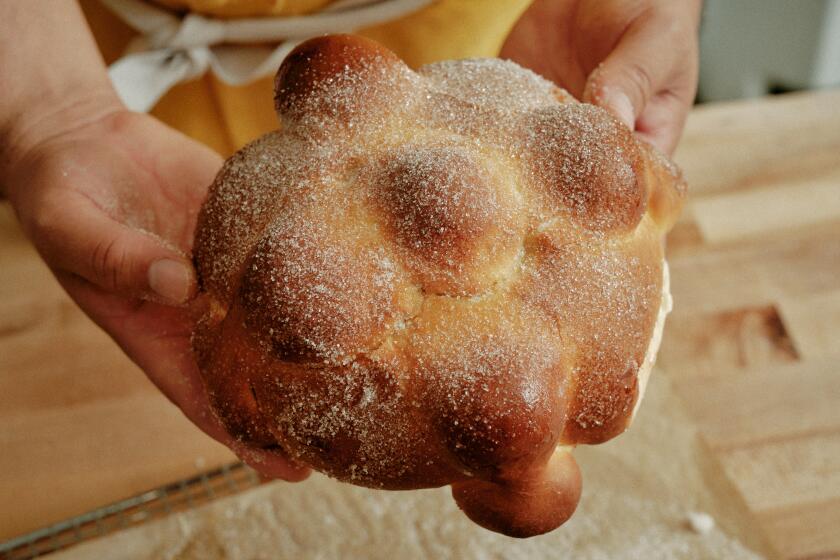Rice congee with pork meatballs and fried garlic oil (Khao Dtom Moo suup)

Fried garlic oil
In a heavy-bottom saucepan, combine the garlic and oil and stir to mix. Set the saucepan over medium heat and cook, stirring constantly, until the garlic turns golden brown. Transfer immediately to a mixing bowl to stop the cooking. When the oil is cooled, transfer to a jar or other airtight container. The oil keeps at room temperature for up to 3 weeks; longer if you refrigerate it.
Fried chile oil
Using a coffee grinder reserved for spices, grind both kinds of dried chiles to a medium-fine powder. In a small saucepan, combine the chiles, garlic, oil and salt over medium heat. Slowly fry the chiles and garlic until fragrant. The chiles will start to turn dark red as the garlic toasts to a tan hue. Remove the pan from heat and cool to room temperature. Store the hcile oil in an airtight jar at room temperature.
Rice congee with pork meatballs and fried garlic oil
In a mixing bowl, combine the ground pork, seasoning sauce, MSG, white pepper, salt and 3 tablespoons scallions, kneading to incorporate. Set aside.
In a medium soup pot, combine the water and ginger slices and bring to a boil over high heat. When the water is at a rolling boil, add the jasmine rice and lower the heat to maintain a gentle simmer. After 20 minutes of simmering, add the pork mixture in teaspoon-size pieces. Simmer the porridge for another 15 minutes, then add the 1 tablespoon fish sauce.
Dish the porridge into small serving bowls and garnish with chopped cilantro, scallions, and fried garlic oil. Serve with condiments on the table.
Get our Cooking newsletter.
Your roundup of inspiring recipes and kitchen tricks.
You may occasionally receive promotional content from the Los Angeles Times.















